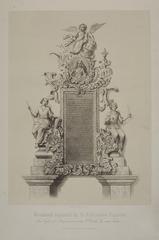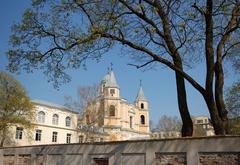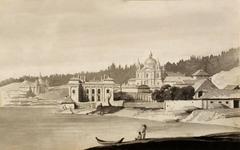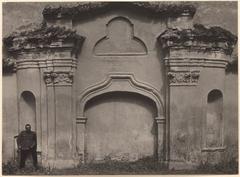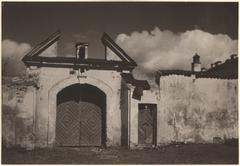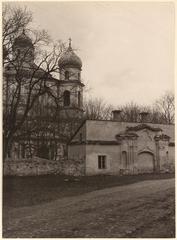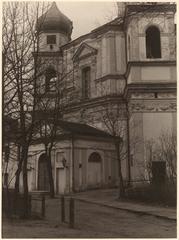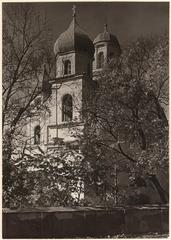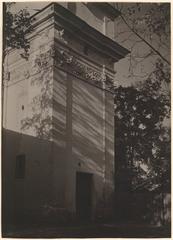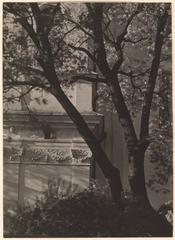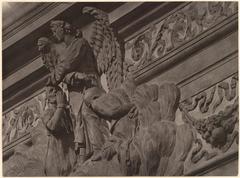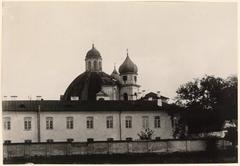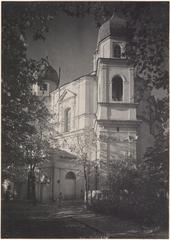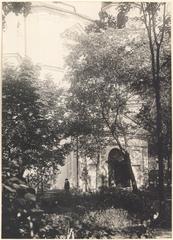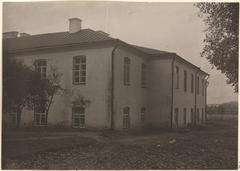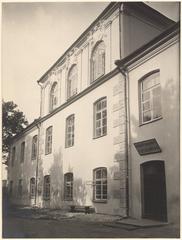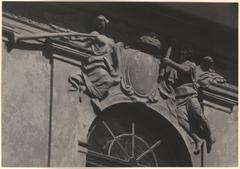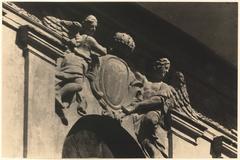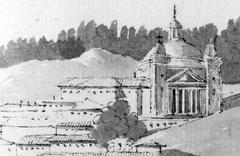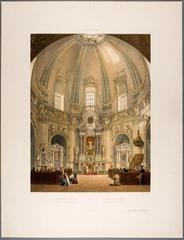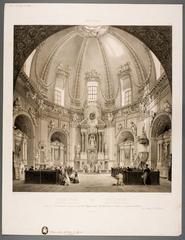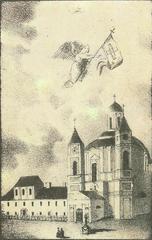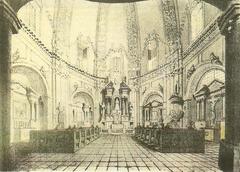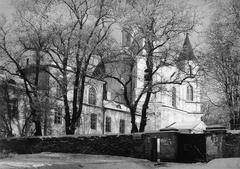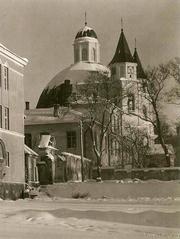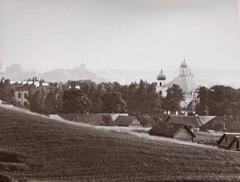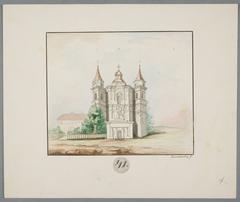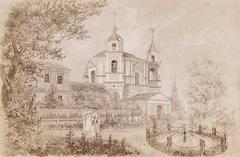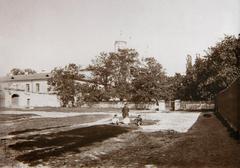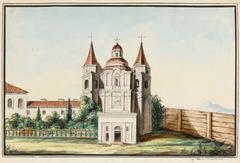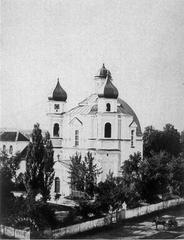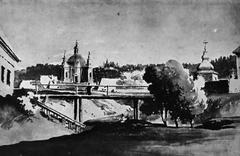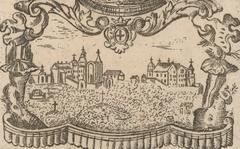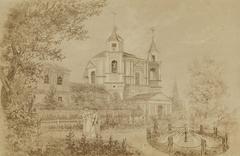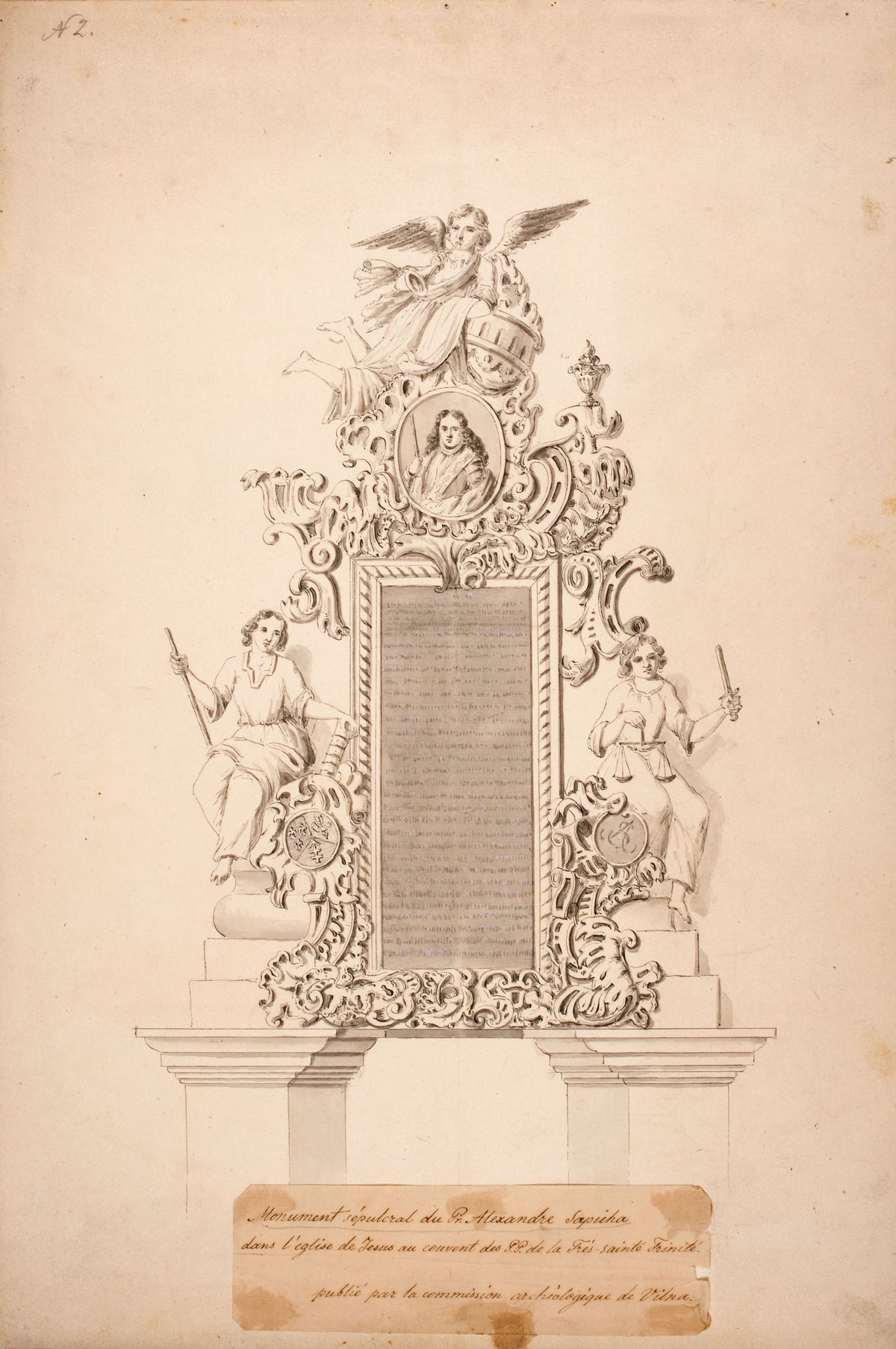
Church of Jesus the Redeemer Vilnius: Visiting Hours, Tickets, and Historical Significance
Date: 15/06/2025
Introduction
The Church of Jesus the Redeemer (Švč. Jėzaus Atpirkėjo bažnyčia) is a landmark of Baroque architecture nestled in Vilnius’ Antakalnis district. Founded in 1694 under Jan Kazimierz Sapieha the Younger and built in collaboration with the Trinitarian Order, this church is an outstanding testament to the city’s religious and cultural heritage. Designed by Italian-Swiss architect Pietro Perti, the church is celebrated for its innovative reticular ceiling and richly adorned façade, and forms part of a grand Baroque ensemble with the Trinitarian Monastery and Sapieha Palace. Its historical, architectural, and spiritual significance make it an essential stop for anyone exploring Vilnius’ UNESCO-listed historic center (City of Mercy, Wikipedia, Go Vilnius UNESCO Site).
Table of Contents
- Historical Background
- Visiting Information
- The Church in Vilnius’ UNESCO World Heritage Context
- Notable Features and Legacy
- Frequently Asked Questions (FAQ)
- Visitor Experience and Etiquette
- Preservation and Heritage Status
- Practical Recommendations and Summary
- References and Further Reading
Historical Background
Origins and Foundation
The Church of Jesus the Redeemer was established in 1694 by Jan Kazimierz Sapieha the Younger, a leading figure in the Polish-Lithuanian Commonwealth. Sapieha’s patronage brought the Trinitarian Order to Vilnius, whose mission was to redeem Christian captives from non-Christian territories. The church was consecrated in 1716, reflecting both the Trinitarians’ purpose and the Sapieha family’s Catholic devotion. Together with the Trinitarian Monastery and Sapieha Palace, the church forms a unique Baroque ensemble in Vilnius (Wikipedia, City of Mercy).
Architectural Significance
Architect Pietro Perti, also known for designing the Church of St. Peter and St. Paul, imbued the Church of Jesus the Redeemer with hallmark Baroque features: a longitudinal plan, a reticular (net-like) ceiling system, and a richly decorated façade. The façade’s sculptures reference the Trinitarian mission, while the interior originally included a miraculous statue of Jesus of Nazareth, inspired by the Madrid Ecce Homo, now housed at St. Peter and St. Paul’s (City of Mercy).
The Trinitarian Order’s Mission
The Trinitarian Order, founded in 12th-century France, focused on redeeming Christian captives. Supported by King John III Sobieski, the Trinitarians arrived in Vilnius in 1693, contributing greatly to the city’s Baroque religious landscape (Wikipedia).
Historical Transformations and Modern Revival
The church endured suppression under Russian rule in the 19th century, conversion to Orthodox use, and extensive damage to its interior. During the Soviet era, it was repurposed as a warehouse, halting religious activity. With Lithuanian independence, the church revived its spiritual and cultural functions. Vilnius Seminary reopened in the former monastery in 1993, and since 2000, the Community of St. John has maintained an active monastic presence (City of Mercy).
Visiting Information
Hours, Tickets, and Accessibility
- General Opening Hours:
- Monday to Friday: 9:00 AM – 6:00 PM
- Saturday: 10:00 AM – 4:00 PM
- Sunday: Closed for general visits; open for services in the morning
- Admission: Free; donations for maintenance are welcome
- Accessibility: The church is partially accessible, with ramps available at the main entrance. Some areas may have limited access due to historical features; assistance can be arranged with prior notice.
- Current Status: Please note that restoration projects may temporarily restrict access to the interior. Always check the official tourism website for the latest information (Live the World).
Guided Tours and Travel Tips
Guided tours are available by prior arrangement and offer in-depth insights into the church’s history, architecture, and art. Early weekday mornings are best for visiting to avoid crowds. Photography is permitted (without flash or tripods). The church is easily reached by public transport from Vilnius city center; bus routes 1, 2, and 88 have stops nearby.
Nearby Attractions
- Church of St. Peter and St. Paul: A Baroque masterpiece within walking distance.
- Sapieha Palace and Park: Adjacent to the church, perfect for a scenic stroll.
- Vilnius Old Town: A UNESCO World Heritage Site with numerous historic buildings, restaurants, and shops.
- Antakalnis Cemetery: A site of Lithuanian historical significance.
The Church in Vilnius’ UNESCO World Heritage Context
The Church of Jesus the Redeemer is key to the UNESCO-listed Vilnius Historic Centre. Its Baroque ensemble, alongside Gothic, Renaissance, and Neoclassical architecture, gives Vilnius its distinctive skyline. Preservation efforts ensure this cultural heritage endures for future generations (Go Vilnius UNESCO Site).
Notable Features and Legacy
- Reticular Ceiling: An architectural innovation allowing a spacious interior and enhanced acoustics.
- Baroque Façade: Decorated with sculptures depicting the Trinitarian mission.
- Integration with Sapieha Ensemble: The church, monastery, and palace form a coherent Baroque complex, demonstrating aristocratic patronage of the arts.
- Spiritual and Cultural Role: The church remains a living monument to Vilnius’ Catholic faith and resilience.
Frequently Asked Questions (FAQ)
Q: Are there entrance fees for the Church of Jesus the Redeemer?
A: No, admission is free. Donations are appreciated.
Q: What are the visiting hours?
A: Monday–Friday 9:00 AM–6:00 PM, Saturday 10:00 AM–4:00 PM, closed for general visits on Sundays.
Q: Is the church wheelchair accessible?
A: Partially; assistance can be arranged.
Q: Are guided tours available?
A: Yes, by appointment through the visitor center or local tour operators.
Q: Can I take photographs inside the church?
A: Yes, but without flash or tripods.
Q: What if the church is under restoration?
A: The exterior can still be admired; check official sources for interior access updates.
Visitor Experience and Etiquette
- Dress modestly and maintain respectful silence, particularly during services.
- Photography is allowed, but always be mindful of ongoing religious activities.
- The church participates in local festivals and cultural events, providing opportunities for deeper community engagement.
- There are no restrooms onsite; amenities are available in nearby cafes and restaurants in Old Town (Europe Up Close).
Preservation and Heritage Status
As part of the Antakalnis Baroque ensemble, the Church of Jesus the Redeemer is a protected heritage site. Restoration efforts continue to safeguard its architectural and artistic treasures. Educational initiatives and heritage tours highlight its importance as a living place of worship and significant monument (Mapcarta).
Practical Recommendations and Summary
- Combine with Nearby Sites: Visit the Church of St. Peter and St. Paul, Sapieha Palace, and Vilnius Old Town for a comprehensive experience.
- Best Time for Photography: Early mornings and late afternoons offer optimal natural lighting for the Baroque façade.
- Accessibility: While the main entrance is ramped, cobblestone streets may pose challenges for some visitors.
- Stay Up-to-Date: Check Go Vilnius and the City of Mercy for the latest visiting hours and restoration updates.
- Explore Further: Download the Audiala app for guided audio tours and follow local social media channels for event news and additional travel tips.
References and Further Reading
- City of Mercy
- Go Vilnius UNESCO Site
- Vilnius Tourist Information Centres
- Tripomatic
- Live the World
- Wikipedia - Church of Jesus the Redeemer
- Europe Up Close
- True Lithuania
- Mapcarta
- VisitSights
- Vilnius with Locals
- RouteYou

